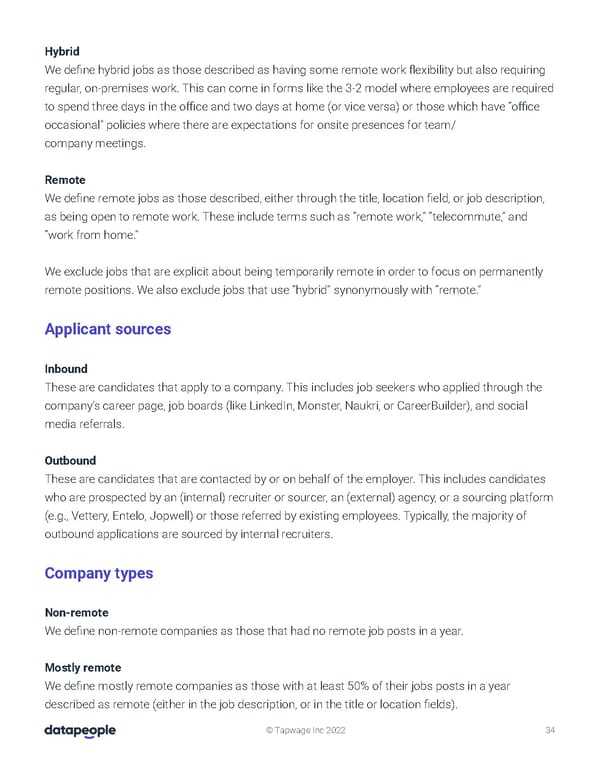Hybrid We define hybrid jobs as those described as having some remote work flexibility but also requiring regular, on-premises work. This can come in forms like the 3-2 model where employees are required to spend three days in the office and two days at home (or vice versa) or those which have “office occasional” policies where there are expectations for onsite presences for team/ company meetings. Remote We define remote jobs as those described, either through the title, location field, or job description, as being open to remote work. These include terms such as “remote work,” “telecommute,” and “work from home.” We exclude jobs that are explicit about being temporarily remote in order to focus on permanently remote positions. We also exclude jobs that use “hybrid” synonymously with “remote.” Applicant sources Inbound These are candidates that apply to a company. This includes job seekers who applied through the company’s career page, job boards (like LinkedIn, Monster, Naukri, or CareerBuilder), and social media referrals. Outbound These are candidates that are contacted by or on behalf of the employer. This includes candidates who are prospected by an (internal) recruiter or sourcer, an (external) agency, or a sourcing platform (e.g., Vettery, Entelo, Jopwell) or those referred by existing employees. Typically, the majority of outbound applications are sourced by internal recruiters. Company types Non-remote We define non-remote companies as those that had no remote job posts in a year. Mostly remote We define mostly remote companies as those with at least 50% of their jobs posts in a year described as remote (either in the job description, or in the title or location fields). © Tapwage Inc 2022 34
 Hiring in Distributed World Page 34 Page 36
Hiring in Distributed World Page 34 Page 36